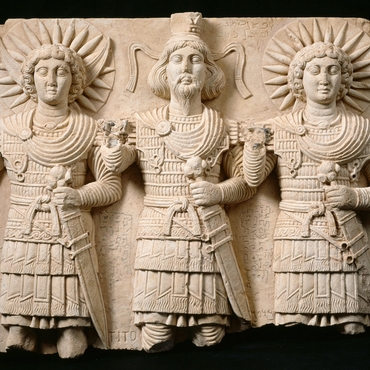
- Home
- Explore the site
- The rediscovery of Palmyra
- Deciphering Palmyrene
A derivative of Aramaic
Palmyrene is a dialect of Aramaic, the language of the Aramean nomads who spread throughout the Near East in the early 1st millennium. Aramaic became the official language of the region under the Persian Empire (6th-4th centuries), and then evolved into a series of distinct dialects. The best known are Nabataean, Syriac and Palmyrene. Palmyrene is written from right to left in a 22-letter alphabet.
Deciphering by Jean-Jacques Barthélemy
When Palmyra was rediscovered in the 17thcentury, the first travellers returned with fanciful copies of the inscriptions, arousing the curiosity of scholars. The first reliable copies were made in 1753, and a year later Jean-Jacques Barthélemy (1716-1795), a specialist in Oriental languages and numismatics, managed to decipher the writing.
He did so using a bilingual inscription in Palmyrene and Greek. He started by identifying a proper name (Septimion Ouoroden) at the beginning of the Greek text, and correctly assumed the same name was written at the beginning of the Palmyrene text. He also assumed that Palmyrene must be a dialect of Aramaic, and especially Syriac. As such, all 22 letters represented consonants, as in Aramaic. Jean-François Champollion used the principles developed by Barthélemy to decipher the hieroglyphs of the Rosetta stone.


